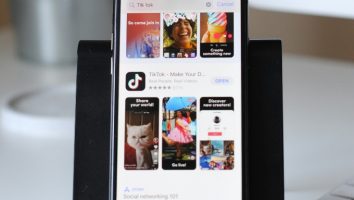By: Maxine Fox
Over the past year of lockdowns there has been a significant rise in linear and VOD content that is both educational and entertaining. However going forward, online video platforms like YouTube and TikTok will likely lead the new edutainment frontier. Findings from Giraffe Insights “Little Voices” survey show that more and more, kids are using social media platforms for learning, and this rise in demand is spawning a new kind of influencer.
Edutainment “big bang” moment
During the early stages of lockdown, parents were presented with a unique set of challenges; keeping their kids entertained despite guidance to stay inside, and ensuring their kids were still learning despite not being at school. Parents turned to VOD and linear to both educate and entertain their children, spawning a boom in edutainment content, blurring the lines between education and entertainment.
In the first half of 2020, research by Giraffe Insights found that eight in 10 parents thought it was important for their kids to watch content that was both entertaining and educational, and 67% of kids watched more educational content during this time.
A year later, it’s clear that edutainment isn’t a passing fad. In fact, 50% of parents believe their kids will watch more edutainment content in the future, but the genre is evolving. Kids and parents are increasingly open to engaging with content online, especially on video platforms like YouTube and TikTok.
Social: the new learning destination
Although linear and VOD will always have their place in kids’ lives, the future of edutainment looks increasingly digital. Over the past year of lockdowns parents’ attitudes towards screen time have changed, and 70% of parents are happy for their children to go online for educational purposes. In fact, parents ranked YouTube as the best online platform for learning, with TikTok not far behind.
Kids too, are increasingly turning to digital platform to supplement their distance learning. More than a third of kids use social media and online video platforms to watch tutorials, with 70% going on YouTube specifically to learn new information.
(This follows broader trends as kids are increasingly active across social media platforms in general, with almost nine in 10 using YouTube and over a third using TikTok regularly—despite age restrictions. In fact, 68% of kids covered by Giraffe Insights, “Little Voices” survey have their own social media account.)
The rise of ed-fluencers
The rise of online tutorial channels such as 5 Minute Crafts and the branding of TikTok as a learning destination through campaigns such as #LearnOnTikTok have had a significant impact on how kids interact with these platforms.
Over the past year, we have seen the rise of a new breed of kids influencer—the “ed-fluencer.” Operating across social media and video sharing platforms, the ed-fluencer combines the relatability of the everyday influencer, with educational rigor of a classroom teacher. These influencers range from being experts in their fields, such as Neil deGrasse Tyson teaching physics on TikTok, to kids themselves sharing revision tips. Increasingly, celebrities are re-branding as ed-fluencers, with celebs like David Walliams, Myleene Klass and notably Joe Wicks offering free online lessons for kids.
So, what does this all mean for kids content creators and brands? Going forward kids content creators should be looking at how their edutainment content could translate onto digital platforms either directly in terms of YouTube or TikTok videos or in partnership with popular ed-fluencers.
Some broadcasters are already taking advantage of this shift online, with Channel 4 and E4 partnering with TikTok to create educational and informative content, in an effort to increase youth engagement.
This trend was building even before stay-at-home orders forced kids and parents to get creative with their schooling, and it’s certainly going to stick around long after the pandemic has ended. Kids were already on social media and digital platforms, and now they’ve found a parent-approved reason to be there, too.
The Little Voices study surveys kids aged 2-12 and parents every other month, capturing their viewing and purchasing behaviours and attitudes. To find out more, contact Giraffe Insights at info@giraffeinsights.co.uk.
Image courtesy of Element5 Digital on Unsplash
























